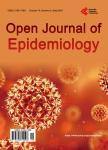Effects of Good Practices for Catch-Up Vaccinations: Assessment with a Quasi-Experimental Study in Democratic Republic of Congo
Effects of Good Practices for Catch-Up Vaccinations: Assessment with a Quasi-Experimental Study in Democratic Republic of Congo作者机构:Epidemiology and Biostatistics Department Public Health Regional Institute Ouidah Benin Ministry of Health Kinshasa Democratic Republic of the Congo Health Promotion Department Public Health Regional Institute Ouidah Benin Agence de Médecine Préventive Abidjan Ivory Coast
出 版 物:《Open Journal of Epidemiology》 (流行病学期刊(英文))
年 卷 期:2019年第9卷第1期
页 面:50-63页
学科分类:1002[医学-临床医学] 100214[医学-肿瘤学] 10[医学]
主 题:Immunisation Programs Vaccination Coverage Community Participation Non-Randomized Controlled Trials as Topic
摘 要:Introduction: Despite the enormous resources deployed and the success achieved in vaccination, reducing the number of children who remain unvaccinated remains a major operational challenge in certain countries. In 2014, the Kalemie Expanded Program of Immunization outpost in the Democratic Republic of the Congo was faced with a high number of unvaccinated children. They instituted a “token catch-up system based on a collaborative approach with community health workers. This study aims to document the effects of this strategy on vaccination coverage. Methods: This study was a comparative quasi-experimental test/control study. The “test health area was Undugu where the catch-up strategy was implemented and the “control health area was Kanunka. A vaccination coverage survey was conducted according to the WHO method in both health areas, examining children aged 12 to 23 months. The proportions were compared using a Pearson chi-square test and the odds ratios were estimated. Results: Vaccine coverage was significantly higher in the “test health area for all the antigens. Full vaccination coverage was 69.4% in the “test health area versus 31% in the “control health area, with a 4.7 times greater chance of being fully vaccinated in the “test health area (OR: 4.7;CI 95% [3.1 - 7.2];p = 0.0001). Conclusion: This study demonstrates the value of a strategy that can increase access to vaccination and use of vaccination services, leading to a reduction in inequality in this area. However, this is linked to adapting the collaborative model on which it is based. This must be taken into consideration in plans to reproduce the findings.



